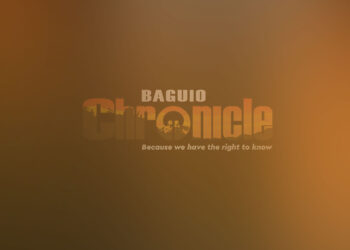WHEN my husband Kidlat and I initially booked our flights home, it was like flying blind: we had no idea how things would go, as we were planning this holiday during a worldwide pandemic. Travel rules and lockdown announcements seemed to change every week or from day to day. So we booked our flight home for the day after his last day of work. That seemed safest and gave me at least two weeks to enjoy Madrid.
Kidlat flew to Spain three weeks ahead of me to help set up his father’s massive art installation at the Palacio de Cristal in Retiro Park (it is up until March 6, for those of you who have a yen for travel). I arrived a few days before the opening, and the following days showed me how vital Kidlat was to getting the show off the ground. From being his father’s sounding board on where to place things, to coordinating schedules between Reina Sofia Museum and the crew, scheduling pre-flight RT-PCR tests and filling out health forms, finalizing the invite list, and more! In short, Kidlat didn’t want to fly straight home after his last work obligation. He wanted – and deserved – a bit of a holiday.
For the next three days, when we would return home late at night, he was on the phone to the airline call center, trying to rebook our flights. I started to dream about the airline’s theme song. I heard it so many times. But on the third day, Kidlat’s persistence paid off! He got to speak with an actual human being, and this lovely human being, after trying out several options (there is a degree of difficulty in rebooking flights in the middle of a pandemic when seats are limited due to quota restrictions), was able to rebook us on a flight that gave us five extra, precious days in Spain.
After rebooking the flight, we took up the invitation of Kidlat’s cousin Anna to stay with her in San Sebastián. She had moved there from London in 2018 to take up her masteral degree in film and was now on a full scholarship to do her Ph.D. with an English university.
Kidlat was exhausted, and we almost opted to just hang out in Madrid, but we both realized we could decompress during the five-day quarantine when we arrive in Clark.
Also, everyone we spoke with said we had to go to San Sebastián. Known since the mid-1800s as the summer playground of the Spanish monarchy and nobility, the Basque seaside town has been called the most beautiful city in Spain, its neighborhoods shaped in the French neoclassical style. All I wanted was to get lost in the streets of Parte Vieja and eat pintxos (tapas). Anna’s flat was perfectly located in the old part of Donostia (the Basque name of San Sebastian) for this endeavor.
Kidlat and I share a love for long train rides, and the ride to San Sebastián did not disappoint. We were booked on the slow train, so we had seven hours of watching the autumnal colors spread across the countryside, reading a good book (I brought Joyce Roque’s “How To Ride a Train to Ulaanbaatar and Other Essays”), intermittently chatting about everything and nothing and catching a few catnaps in between. By the time we got to the city at dinnertime, we were completely relaxed.
After a home-cooked dinner of tomato pasta and red wine, Anna took us for a walk along La Concha beach outside Parte Vieja or the Old Town. After being in landlocked Madrid, to be by the sea was so refreshing! We were well wrapped to protect us from the cold autumn wind, but our cheeks enjoyed the rough caresses of the salty sea air. We walked along the 1.3 km beach, the fine sand cool to my skin, the lights of the grand buildings built alongside La Concha twinkling like Christmas lights.
The next day, we explored Zurriola, a beach popular with surfers. It was funny, being all bundled up for the cold, and watching these surfers clad in wetsuits, paddling out to catch a wave. Behind the beach is the neighborhood Gros, where we had lunch at Casa de Galicia, a favorite haunt of locals. We had the menu del dia, and though we were only two, the waiter gave us a whole bottle of wine. Even solo diners were given the whole bottle! I enjoyed my appetizer of pulpo with a crab bisque sauce over risotto, and baked salmon with potatoes for my entrée. For dessert, we had a local version of bread pudding with ice cream, with café con leche.
We walked home in a languid stupor only a good meal can render.
That night began our exploration of pintxos. The locals usually meet up at a bar before heading home and order a drink and a pintxo or two, but we decided to make a meal of pintxos. I cannot tell you their names, for we often ordered by gesturing towards an item under a glass display case, so I can only describe most of them. Slices of bread topped with: anchovy on cream cheese, shredded crab, jamon iberico with a slice of cheese and marmalade, chistorra (really yummy local sausage that I hand-carried home!), to name a few. Anna introduced us to her favorite, called the Gilda – pickled green peppers skewered on a toothpick with a piece of anchovy and an olive – talk about an explosion of flavors in one’s mouth! As raciones, my new favorite to order are chupitos, baby squid breaded, and deep-fried. We also drank a few glasses of Txacoli, the traditional wine of the Basque region. Yum!
Judging from some photos, the bars we went to were Gorriti Taberna, Izkiña Bar and Restaurant, and Bar Sport (I know, the name doesn’t inspire but their pintxos rocked). We had a list of places to try, but in the end, we followed our noses (and Anna, he he), and thoroughly enjoyed ourselves.
The following day, we explored the Tabakalera International Center for Contemporary Culture of San Sebastián, where Anna took up her master’s degree in film. The former tobacco factory is an awesome space, housing several multimedia art galleries, a media library, a film school, a co-working space, and a restaurant. On our walk home, we passed by a supermarket and bought some pasalubongs for family back home such as cans of anchovy and chistorra.
As we walked along the seaside on our last night in San Sebastian, Anna hugged us tight. “It’s so nice not being the only de Guia in this part of the world,” she said. And in the end, this is one of the best reasons we human beings travel – to visit our loved ones, to spend time together laughing and bonding over good food, to let that warm, fuzzy feeling radiate from our hearts to theirs as we hug each other tight.









